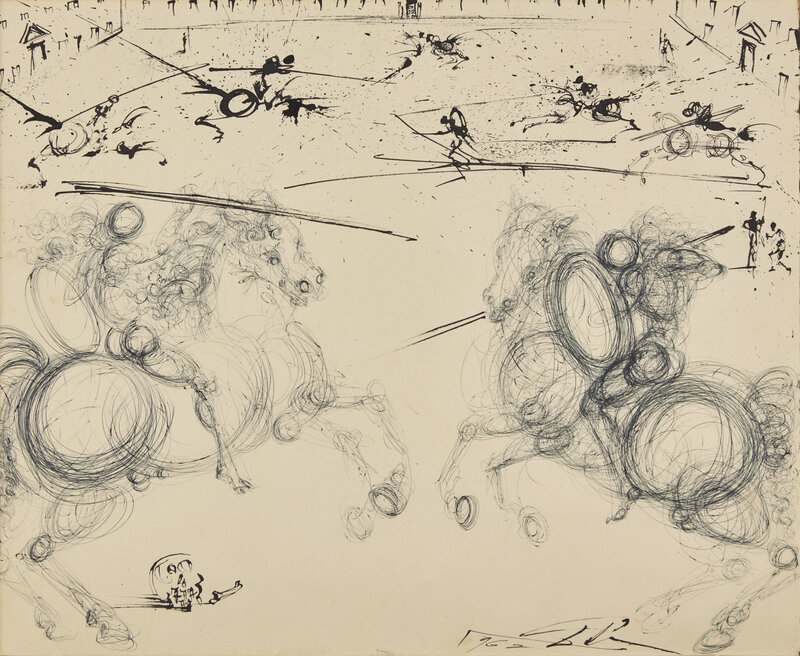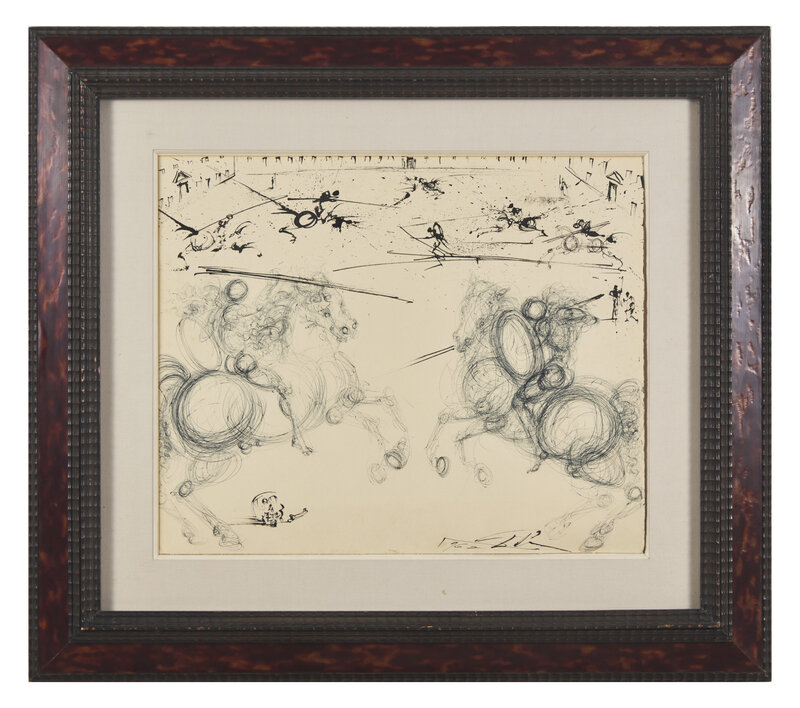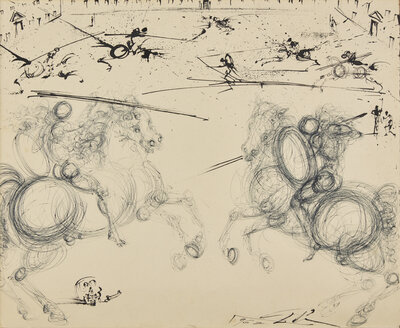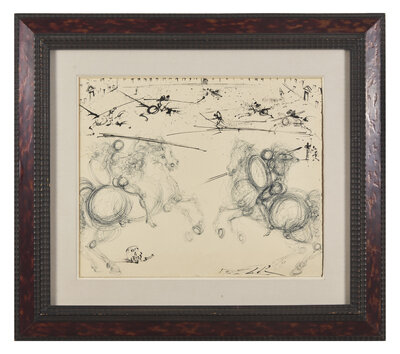Salvador Dalí
(Spanish, 1904–1989)
Combat de Chevaliers (Original Illustration for Pedro Calderón's La Vida Es Sueño), 1962
Sale 2087 - Impressionist and Modern Art, Featuring the Collection of John and Rosetta Gernon
Oct 28, 2024
12:00PM ET
Live / Philadelphia
Own a similar item?
Estimate
$40,000 -
60,000
Price Realized
$50,800
Sold prices are inclusive of Buyer’s Premium
Lot Description
Salvador Dalí
(Spanish, 1904–1989)
Combat de Chevaliers (Original Illustration for Pedro Calderón's La Vida Es Sueño), 1962
India ink and ballpoint pen on paper
Signed Dalí and dated (lower right)
Sheet size: 14 3/4 x 18 1/18 in. (37.5 x 46cm)
This lot is located in Philadelphia.
Private Collection, Georgia.
We wish to thank Mr. Nicolas Descharnes for confirming the present work is listed in the artist's Archives under the number d0337_1962.
Provenance:
Collection of Mrs. Catherine Perrot.
Sotheby's, London, n.d. (sold to benefit Fondation Perrot-Moore).
Lot Essay:
The present work is the original preparatory illustration for one of the subjects of the 1973 print series La Vida es Sueño (Life's a Dream). The full series, which includes 12 engravings (all made after original drawings by Dalí), was published by John Peter Moore, Dalí's personal secretary.
Written in 1635 by Pedro Calderón de la Barca, Life’s a Dream is a Baroque play that encapsulates the metaphysic questionings of 17th Century Spain, as it delivers a reflection on dream and reality, play and illusion - themes that appealed to Dalí for whom, "life is a farce and the world a theater." The present work depicts two fighting cavaliers in a Spanish Renaissance courtyard, which would reappear in several other works from the series. Both helmeted and wielding a lance at each other, they recall the paintings of Saint George slaying the dragon by Raphael, or the chaotic battle scenes by Paolo Uccello.
In handling both media so expertly and rapidly, Dalí not only proves his high sense of draftsmanship, but also showcases his talent as a set designer (he had in fact already painted half a dozen sets for Anthony Tudor’s Romeo and Juliet while in New York at the onset of WWII). Above all, the work reveals the artist’s ongoing fascination with horsemen, which appear frequently in Dalí’s oeuvre, at times to evoke Don Quixote (a character the artist was particularly drawn to, and proud of, from a Spanish standpoint), others as a metaphor for death, which both obsessed and terrified Dalí - as revealed by the menacing presence of a skull in the bottom left corner of the present composition.
Condition Report
Auction Specialist





